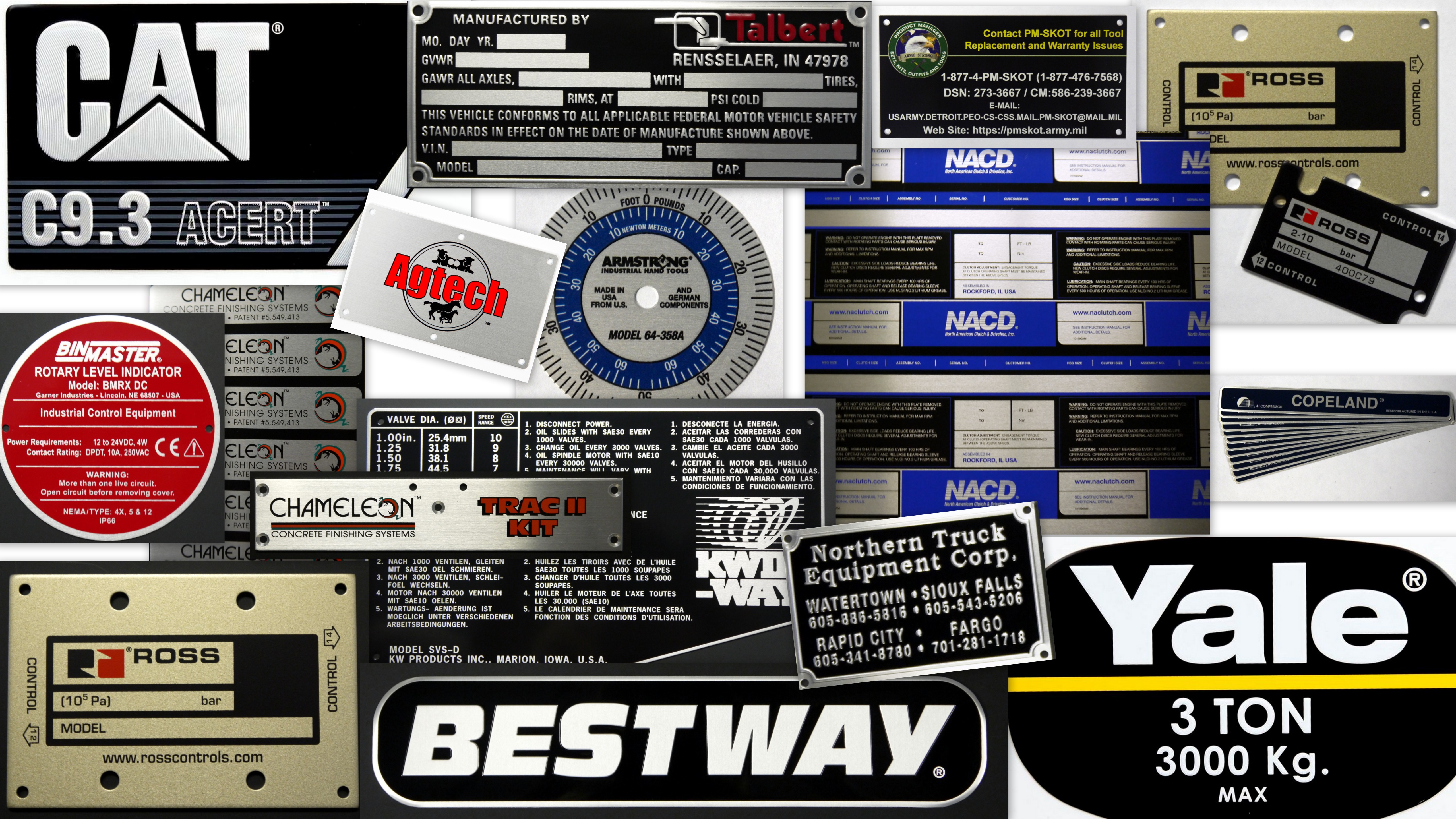Metal nameplates and components are as valuable as the product they’re attached to, which means the design phase in creating them is a critical process. There are specific considerations that should be made before moving forward with a design, so taking time to weigh the implication of your particular application carefully will lead you toward a safe and great looking nameplate or component.
Who will lay eyes on it?
Metal components such as emblems can act as an eye-catching accent on products such as vehicles; however, when chosen hastily they can easily become an eyesore. Creating a badge for your product that complies with company brand standards not only maintains an integrated look but conveys an easily identifiable message whether it’s for the safety of the user or simple aesthetic pleasure. Consider the following when creating your next component or nameplate:
- When building brand awareness and drawing attention to your product, using metal components adds a sleek, stunning, high-end aesthetic that draws more attention to it than a blandly designed component. Simply stated, metal nameplates, labels, and components have a significant impact on how your product is viewed are representative of your brand.
- U.S. Nameplate Co. has devised a way to simplify the process to assist customers in selecting the correct material for their nameplates and labels based on industry, environment, and application. We have a staff of technical professionals, engineers, and graphic artists with experience and are more than capable and willing to assist companies of all industries in the design, specification, and ordering of custom nameplates.
Communicate Your Requirements
Specific applications require a reliable performance standard which is expected within the nameplate industry, so don’t hesitate to communicate any requirements and tolerances you may have. Consider the conditions your label or nameplate will face; are any of the following likely to occur?
- Will the nameplate or label be outside? If yes, for how long? 1-3 years, 3-5 years, 20 years or more?
- Will it be prone to scratching, rubbing, scraping, or scouring? Nameplates in these situations require a resistance to abrasion—measured in cycles on a tabor abrader (500, 1,000, 4,000, 7,000+).
- Is the label likely to be close to a heat source such as an engine, pump, generator, furnace, etc.? Such applications commonly require the label to be heat resistant in excess of 1,200ºF.
- Geographically, where will the product be used? Resistance to a salty solution will add life to the label or nameplate when deployed on the coasts or areas where snow removal is common.
- What is the probability the nameplate or label will come into contact with harmful or corrosive liquids and chemicals? Resistance to chemicals—such as Skydrol, diesel fuel, hydraulic fluid, and MEK; measured in hours before degradation.
U.S. Nameplate Co. offers an extensive list of products and materials from flexibles like polycarbonate and vinyl to metals like aluminum, brass, Metalphoto, and stainless steel which offer a wide range of durability to meet your product specifications.
What will it say?
To effectively communicate information, a nameplate needs to be optimally-legible. It’s important to know exactly what the nameplate is intended to communicate so the following can be addressed.
- Know what data your nameplate or label needs to hold, so you get an idea of how large it needs to be.
- Does your nameplate have to follow OSHA, ANSI, ISO, or perhaps other standards?
- Will the date be the same on every nameplate or will it be serialized?
- Will the product include barcodes or other machine-readable (AIDC) marks?
- Do you need other graphic features like micro-text for anti-counterfeit features or high-resolution maintenance schematics?
- Ensure that the material your supplier recommends is certified to any commercial or military specification you need to meet.
Consider the Physical Attributes
Focus in on the specifics. Think about the size, specifically, thickness, height, and width. Equally important are attributes such as sheen and pattern, and even the methods of attachment. Choose wisely by weighing the following.
Thickness
Thinner foil labels (.003” and .005” thick) will adhere to curved surfaces or sit inside recessed areas of your part. This feature affects the location a label can be used and even the amount of abrasion it must withstand.
Size
Does your application require the nameplate to fit in incredibly small spaces or be easily seen from afar? Different materials lend themselves to performing well at specific sizes such as Metalphoto, which is available as small as .25” x .25” and as large as 24” x 40”.
Attachment
The surface type and environment are the major determining factors in which method of attachment can be utilized. Think about the texture, material, and elements the nameplate will be exposed to.
Enlist the Help of Experts
The knowledgeable professionals at U.S. Nameplate Co. are prepared to assist you in creating the perfect nameplate or label for your product. When creating your nameplate, we understand the importance of considering who will see it, special requirements that must be met, what it says, and physical attributes such as thickness, size, and how it will be attached to a surface. Contact us for everything you need in your next nameplate.
